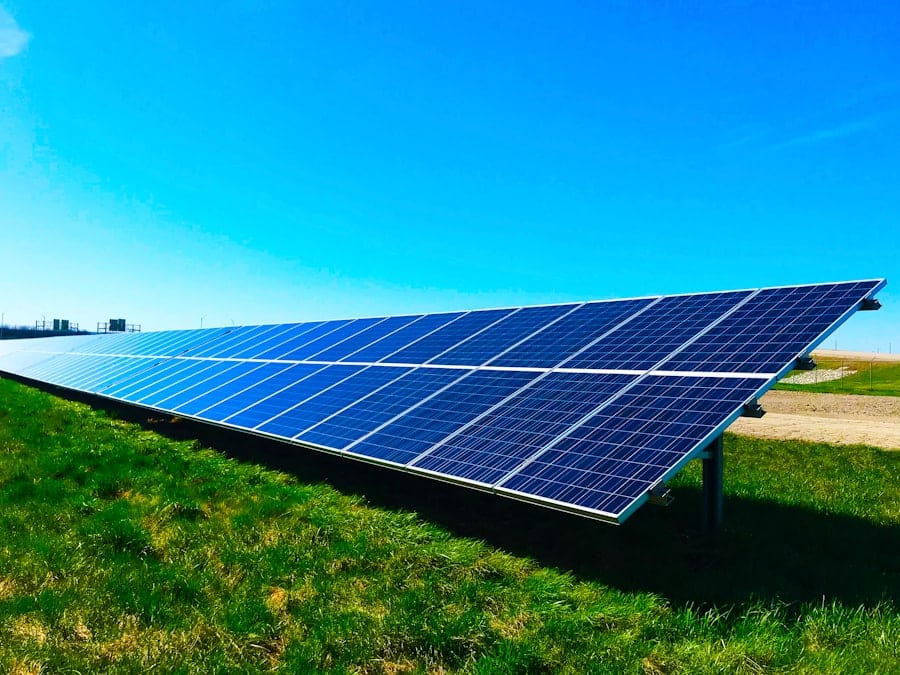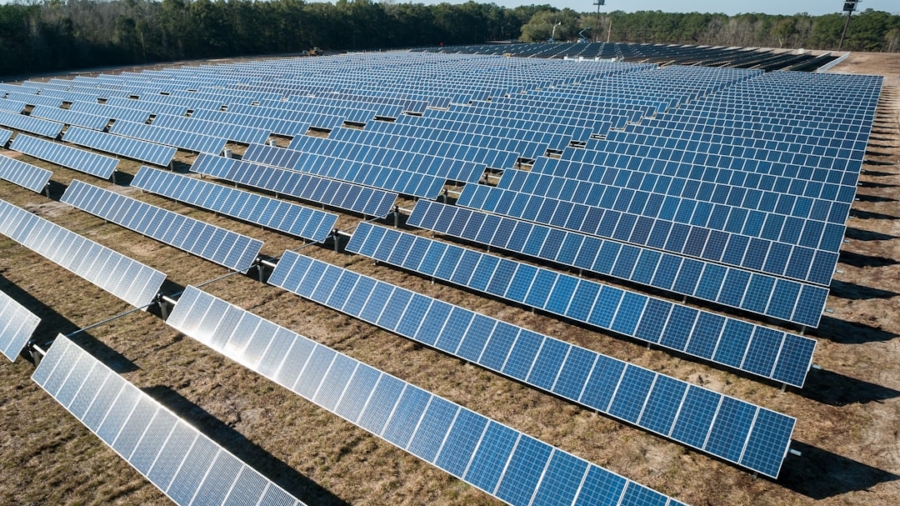The advent of renewable energy technologies has significantly transformed the landscape for off-grid communities, which often face challenges related to energy access, reliability, and sustainability. These communities, typically located in remote areas, have historically relied on fossil fuels or traditional biomass for their energy needs. However, the integration of renewable energy sources such as solar, wind, biomass, and hydroelectric power has opened new avenues for sustainable development.
By harnessing local resources, off-grid communities can reduce their dependence on imported fuels, lower energy costs, and enhance their resilience against climate change. Moreover, renewable energy systems can empower off-grid communities by providing them with the tools to manage their energy needs independently. This autonomy fosters economic development as local businesses can thrive with reliable power sources.
For instance, small-scale solar installations can power local enterprises, from food processing to telecommunications, thereby creating jobs and stimulating local economies. Additionally, the environmental benefits of renewable energy cannot be overstated; by reducing greenhouse gas emissions and minimizing air pollution, these technologies contribute to healthier living conditions and a more sustainable future for off-grid populations.
Key Takeaways
- Renewable energy can significantly improve the quality of life in off-grid communities by providing reliable and sustainable power sources.
- Solar power plays a crucial role in off-grid energy solutions, offering a clean and abundant source of energy for remote areas.
- Wind energy contributes to off-grid power by harnessing the natural power of the wind, providing a reliable and consistent energy source.
- Biomass energy offers advantages for off-grid communities, utilizing organic materials for power generation and reducing reliance on traditional fuels.
- Hydroelectric power has great potential for off-grid areas, utilizing the power of water to generate electricity and provide a sustainable energy source.
The Role of Solar Power in Off-Grid Energy Solutions
Solar power stands out as one of the most accessible and versatile renewable energy sources for off-grid communities. The technology has advanced significantly over the past few decades, making solar panels more efficient and affordable. In many regions, particularly those with high solar insolation, solar energy can be harnessed effectively to meet the electricity needs of households and businesses alike.
For example, in rural areas of India, solar home systems have been deployed to provide lighting and power for small appliances, drastically improving the quality of life for residents who previously relied on kerosene lamps. In addition to standalone solar home systems, community-based solar projects have emerged as a viable solution for off-grid areas. These projects often involve the installation of larger solar arrays that can supply power to multiple households or even entire villages.
Such initiatives not only enhance energy access but also promote community engagement and cooperation.
Wind Energy and Its Contribution to Off-Grid Power

Wind energy is another promising renewable resource that can play a crucial role in powering off-grid communities. While solar power is often more widely recognized for its applicability in remote areas, wind energy offers unique advantages that can complement solar systems. In regions with consistent wind patterns, small-scale wind turbines can generate significant amounts of electricity, providing a reliable source of power that can be used alongside solar installations.
For example, in parts of rural Alaska, hybrid systems combining wind and solar have been implemented to ensure a stable energy supply throughout the year. The deployment of wind energy in off-grid settings also presents opportunities for innovation and local entrepreneurship. Communities can invest in small wind turbine technology that is tailored to their specific environmental conditions and energy needs.
This localized approach not only reduces reliance on external energy sources but also fosters a sense of ownership among community members. In Scotland, for instance, several remote islands have successfully integrated community-owned wind farms into their energy mix, resulting in lower electricity costs and increased local revenue through the sale of surplus power back to the grid.
The Advantages of Biomass Energy for Off-Grid Communities
Biomass energy offers a unique solution for off-grid communities by utilizing organic materials such as agricultural residues, wood waste, and animal manure to generate heat and electricity. This form of renewable energy is particularly advantageous in rural areas where agricultural activities are prevalent. By converting waste materials into energy, communities can address both energy needs and waste management challenges simultaneously.
For example, in parts of Africa and Asia, biogas digesters have been implemented to convert animal manure into biogas for cooking and lighting, significantly reducing reliance on traditional fuels like firewood. Furthermore, biomass energy systems can be designed to be highly efficient and sustainable. When managed properly, biomass resources can be replenished continuously through sustainable agricultural practices.
This creates a closed-loop system where waste is transformed into energy while promoting soil health and reducing deforestation pressures. In Brazil, for instance, sugarcane bagasse is used as a biomass feedstock for cogeneration plants that produce both electricity and heat for sugar mills, showcasing how biomass can contribute to local economies while providing reliable energy.
Hydroelectric Power and its Potential for Off-Grid Areas
Hydroelectric power has long been recognized as a reliable source of renewable energy; however, its application in off-grid communities often requires careful consideration of environmental impacts and resource availability. Small-scale hydroelectric systems can be particularly effective in regions with flowing water sources such as rivers or streams. These systems can provide continuous power generation with minimal environmental disruption when designed appropriately.
For example, micro-hydropower projects have been successfully implemented in Nepal’s mountainous regions, where they provide electricity to remote villages that are otherwise disconnected from national grids. The potential benefits of hydroelectric power extend beyond mere electricity generation; they also include opportunities for irrigation and water management. By harnessing water flow for energy production, communities can simultaneously improve agricultural productivity through enhanced irrigation systems powered by the same hydroelectric infrastructure.
This dual benefit is evident in various projects across Southeast Asia where small hydro plants have been integrated with local farming practices to boost food security while providing clean energy.
The Integration of Renewable Energy Technologies in Off-Grid Communities

The successful integration of renewable energy technologies in off-grid communities requires a holistic approach that considers local resources, cultural contexts, and community needs. A multi-faceted strategy often involves combining different renewable sources—such as solar, wind, biomass, and hydro—into hybrid systems that maximize efficiency and reliability. For instance, a community might utilize solar panels during sunny days while relying on wind turbines during windy periods or biomass during times of low renewable generation.
Moreover, the integration process must also include capacity building and education for community members. Training local technicians to install and maintain renewable energy systems ensures sustainability and empowers residents to take charge of their energy future. In many cases, NGOs and governmental organizations play a crucial role in facilitating this knowledge transfer by providing technical assistance and resources tailored to the specific needs of each community.
Successful examples abound; in Tanzania, community-led initiatives have trained local youth in solar technology installation and maintenance, creating job opportunities while enhancing local energy resilience.
Challenges and Opportunities in Implementing Renewable Energy in Off-Grid Areas
Despite the numerous advantages associated with renewable energy deployment in off-grid communities, several challenges persist that must be addressed to ensure successful implementation. One significant barrier is the initial capital investment required for renewable technologies. While costs have decreased over time, many off-grid communities still struggle with financing options that allow them to invest in these systems without incurring unsustainable debt levels.
Innovative financing models such as microloans or community crowdfunding initiatives are emerging as potential solutions to this challenge. Another challenge lies in the technical expertise required for installation and maintenance of renewable systems. Many off-grid areas lack access to skilled labor capable of managing complex technologies like solar PV or wind turbines.
To overcome this hurdle, partnerships between local governments, NGOs, and educational institutions can facilitate training programs that equip community members with the necessary skills.
The Future of Renewable Energy in Off-Grid Communities
Looking ahead, the future of renewable energy in off-grid communities appears promising as technological advancements continue to evolve alongside growing awareness of climate change impacts. Innovations such as battery storage solutions are becoming increasingly affordable and efficient, allowing communities to store excess energy generated during peak production times for use during periods of low generation. This capability enhances grid stability and ensures a continuous power supply even in remote areas.
Furthermore, as global efforts toward sustainability intensify, there is an increasing recognition of the importance of decentralized energy systems that empower local communities. Policymakers are beginning to prioritize investments in renewable infrastructure that support off-grid populations while promoting social equity and environmental stewardship. Collaborative efforts between governments, private sector stakeholders, and civil society will be essential in driving this transition forward.
In conclusion, the integration of renewable energy technologies into off-grid communities represents a transformative opportunity for sustainable development. By harnessing local resources through innovative solutions tailored to specific contexts, these communities can achieve greater energy independence while contributing positively to environmental conservation efforts. As we move toward a more sustainable future, it is imperative that we continue to support these initiatives that empower marginalized populations around the world.
A related article to “How Renewable Energy Tech Is Powering Off-Grid Communities” is “Unlock the Power of the Galaxy with the Samsung S22 Ultra” which discusses the latest features and capabilities of the Samsung S22 Ultra smartphone. This article highlights the importance of technology in improving our daily lives and how advancements in mobile devices can also contribute to sustainable living practices. To learn more about the Samsung S22 Ultra, check out the article here.
FAQs
What is off-grid renewable energy technology?
Off-grid renewable energy technology refers to the use of renewable energy sources, such as solar, wind, and hydro power, to provide electricity to communities that are not connected to the main power grid. This technology allows these communities to generate their own electricity and become self-sufficient in terms of energy.
How does off-grid renewable energy technology work?
Off-grid renewable energy technology works by harnessing energy from renewable sources, such as sunlight, wind, or water, and converting it into electricity using technologies like solar panels, wind turbines, or hydroelectric generators. This electricity is then stored in batteries or other energy storage systems for use when needed.
What are the benefits of off-grid renewable energy technology?
Off-grid renewable energy technology offers several benefits, including providing access to electricity in remote or rural areas, reducing reliance on fossil fuels, lowering energy costs, and reducing greenhouse gas emissions. It also promotes energy independence and resilience in communities that are not connected to the main power grid.
What are some examples of off-grid renewable energy technologies?
Some examples of off-grid renewable energy technologies include solar home systems, solar microgrids, small-scale wind turbines, and micro-hydro power systems. These technologies are often used to power homes, schools, health clinics, and other community facilities in off-grid areas.
How is off-grid renewable energy technology impacting off-grid communities?
Off-grid renewable energy technology is empowering off-grid communities by providing them with access to clean, reliable, and affordable electricity. This has a positive impact on education, healthcare, economic development, and overall quality of life in these communities. It also helps to bridge the energy access gap and contribute to sustainable development.

